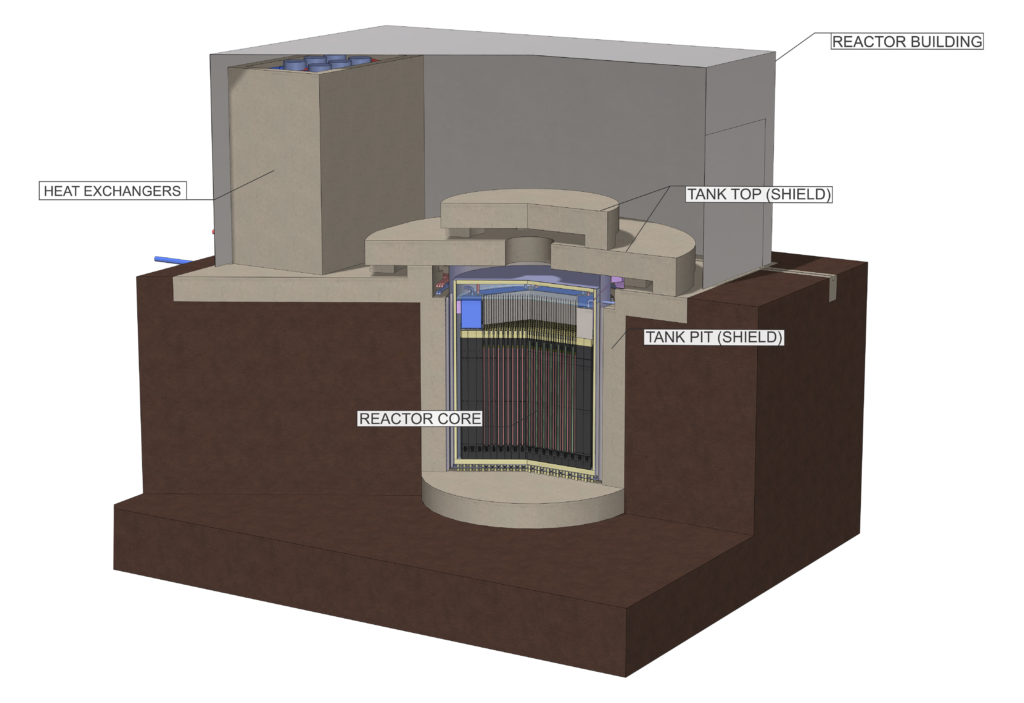 UK-based developer of molten salt nuclear technology MoltexFLEX says it has “reached a watershed in the development of its small modular FLEX reactor” and will now move from the pre-concept science phase into accelerated product and project delivery. Moltex Energy launched its MoltexFLEX subsidiary in 2022 specifically to work on the FLEX reactor – the latest application of the company’s platform stable salt reactor (SSR) design.
UK-based developer of molten salt nuclear technology MoltexFLEX says it has “reached a watershed in the development of its small modular FLEX reactor” and will now move from the pre-concept science phase into accelerated product and project delivery. Moltex Energy launched its MoltexFLEX subsidiary in 2022 specifically to work on the FLEX reactor – the latest application of the company’s platform stable salt reactor (SSR) design.
The FLEX reactor is the thermal spectrum version of Moltex Energy’s globally patented SSR technology – it uses graphite as the moderator. That technology is shared with MoltexFLEX’s sister company, Moltex Energy Canada, which is developing the fast spectrum version (the SSR-W) and the WAste To Stable Salt (WATSS) process that will produce the fuel for the reactor from recycled used fuel. In 2021, the Canadian Nuclear Safety Commission completed the first phase of the pre-licensing vendor design review for the 300 MWe SSR-W. The company aims to deploy its first SSR-W-300 at the Point Lepreau site in New Brunswick by the early 2030s.
MoltexFLEX says it will now expand its operations and has significantly refined the design of the reactor – delivering a 50% boost in power output, while maintaining previous targets for overnight capital cost and cost per MWh. “Despite the recent increases in commodity prices around the world, the FLEX reactor is still able to generate electricity for less than £30/MWh when used as a source of baseload power,” the company notes.
“We have firmly established the core aspects of the FLEX concept as we ramp up engineering design,” said MoltexFLEX Head of Engineering Chris Hankinson. “More work will be undertaken over the coming months to further refine and finally freeze the design, and this will then be taken forward to create our first-of-a-kind reactor.”
While the underlying technology remains essentially unchanged, MoltexFLEX says the design evolutions “represent significant improvements”. The work “provides more certainty about the company’s ability to deliver on its cost targets, reinforces the underpinning science”, and moves towards delivering a prototype FLEX reactor by around 2030.
The main changes to the FLEX design include an increase in power output from 40MWth/16MWe as originally envisaged to 60MWth/24MWe, made possible by optimisation of the core design and the fuel pin material.
The refuelling schedule has also been adjusted because the FLEX reactor will now use 5% low-enriched uranium (LEU) instead of 6% LEU. “This change will increase the reactor’s global deployability and harness the existing fuel supply chain,” the company believes.
“The science and engineering of the FLEX reactor has moved on apace,” said MoltexFLEX CEO David Landon. “The work we have completed further boosts our confidence in the design and economics of the FLEX reactor, and our ability to deliver a first reactor ready for global roll-out through the 2030s.”
Image: Cutaway of the FLEX reactor building (courtesy of MoltexFLEX)



